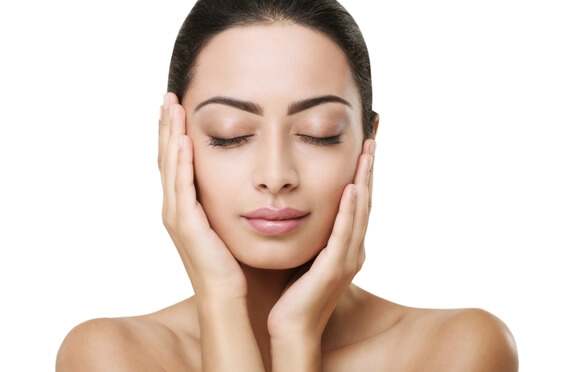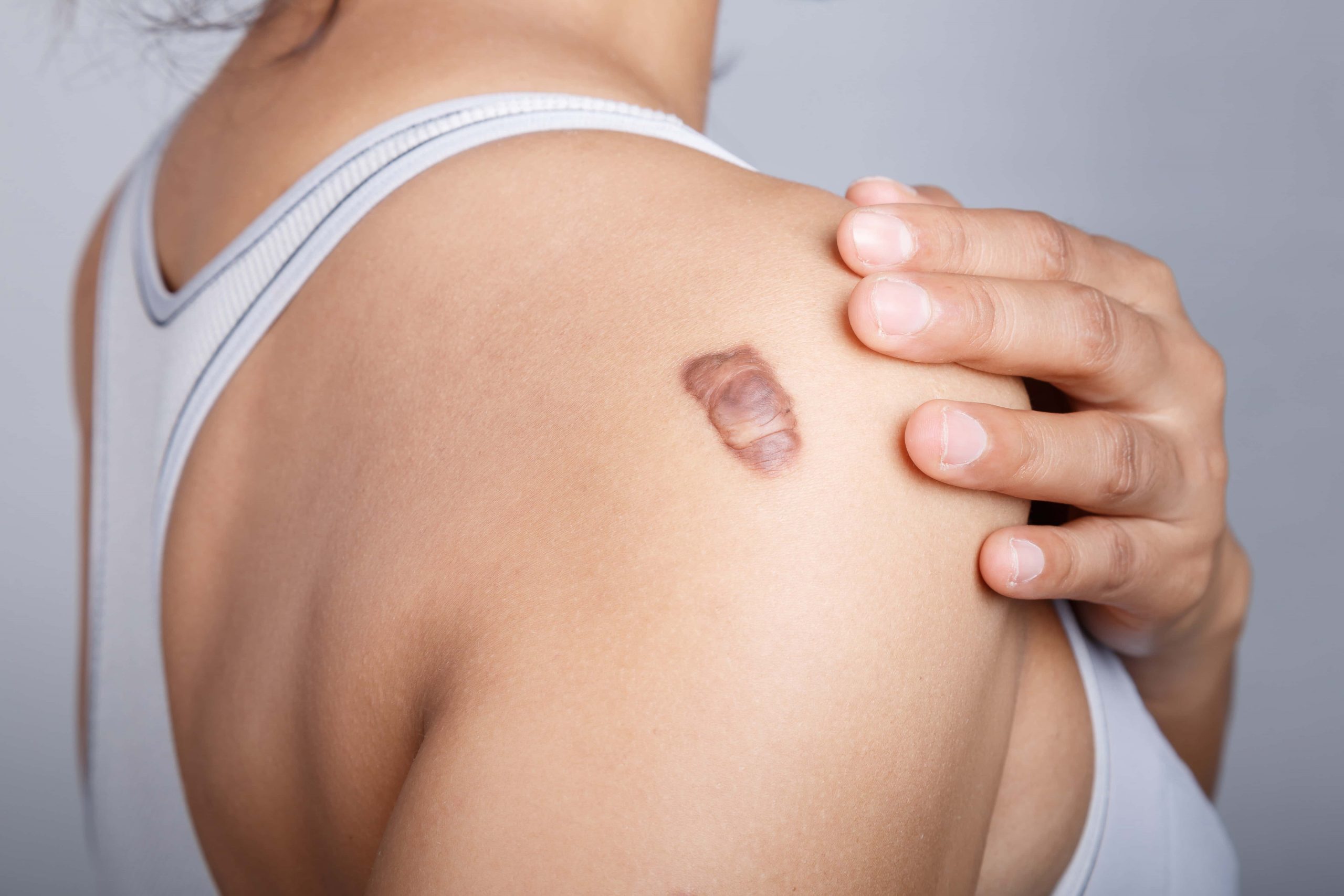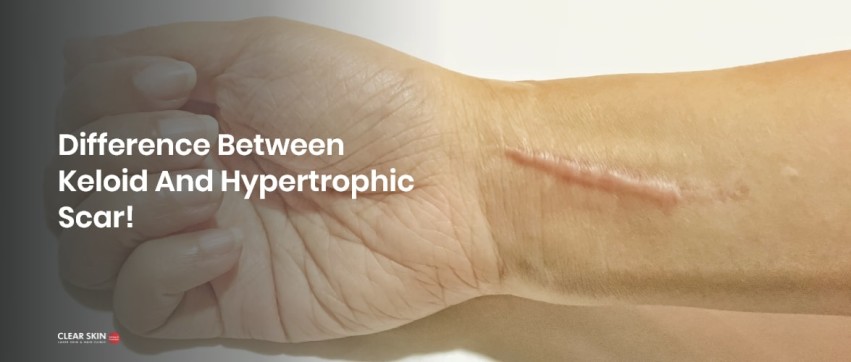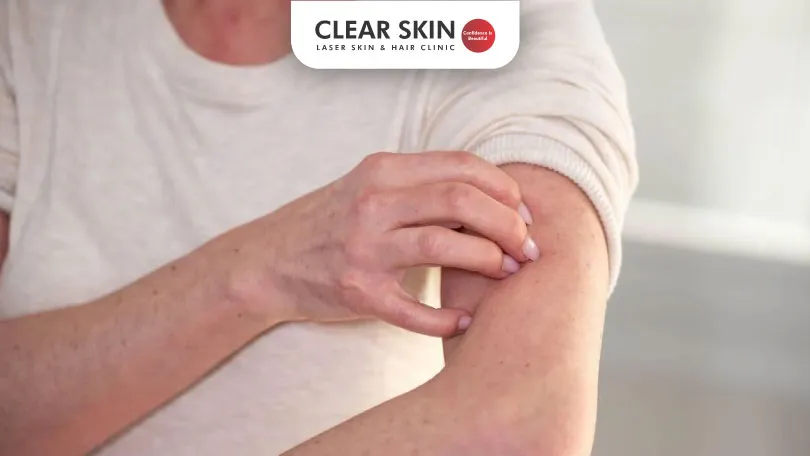Table Of Content
Keloid & Hypertrophic Scar Treatment in Pune
Keloid scars, known for their firm, smooth, and dense texture, emerge on healed wounds due to abnormalities in the healing process. Unlike regular scars, keloids extend beyond the original wound area. Similarly, hypertrophic scars create a thickened skin layer over a wound.
In Pune, expert dermatologists offer a range of treatments for both Keloid and Hypertrophic Scars, utilizing advanced techniques like erbium glass laser, intense pulsed light, fractional CO2 laser treatment, and intralesional steroid injections. These specialized treatments, available at leading dermatologist clinics in Pune, are designed to minimize the size and visibility of keloids and hypertrophic scars. However, the choice of treatment is highly individualized and should be determined by a qualified healthcare professional, ensuring it aligns with the specific condition of each patient.
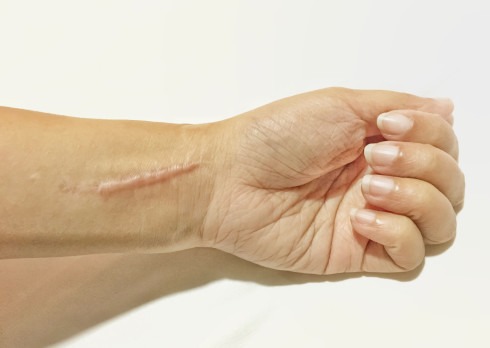
Table Of Contents
Do & Don't for Getting Keloid & Hypertrophic Scar
Keloid Scars
Clotting begins to minimize blood loss after an injury to the skin. Consequently, the collagen and fibrous tissue form the scar tissue. This helps to repair and protect the wound. However, in some cases, this scar tissue grows excessively and forms a smooth, hard growth called a keloid.
Generally, keloid scars grow beyond the original wound. They may be itchy. Moreover, they may worsen in appearance and become painful if left untreated.
Appearance - round, oval, or oblong with irregular margins; some may have crab claw-like configurations at the borders.
- Colour - pink to cherry red.
- Texture - soft and doughy to rubbery and hard.
- Histopathology - composed of irregularly arranged collagen clusters
Hypertrophic Scars
A hypertrophic scar forms if the body overproduces collagen during the healing process. Consequently, the excess collagen may lead to an elevated scar. Usually, a hypertrophic scar does not develop beyond the boundaries of the original wound.
Moreover, the elastic strength of the scar helps to increase the strength of the injured skin by cross-linking collagen fibers.
. In most cases, they remain elevated above the wound if left untreated.
- Appearance - raised above the wound, does not cross the borders of the wound, radial growth.
- Colour - pale.
- Texture - flexible. soft to firm in consistency.
- Histopathology - composed of collagen clusters and fibrous connective tissues.
Do & Don't for Getting Keloid & Hypertrophic Scar
DO: Inform your doctor if you have a tendency to develop keloids and hypertrophic scars on your body
DO: get your wounds treated at an early stage
DON’T: Ignore any injury or wounds
DON’T: Go for any procedures such as tattooing or any surgery without a Dermatologist's opinion.
Treatment Methods
Keloids:
The keloids treatments act by suppressing the inflammation. Additionally, the treatments aim to inhibit collagen and fibrous scar tissue production.
Generally, keloids treatment follows the lines of injury. However, they do not stay restricted to it and can spread to normal skin as well. They tend to be itchy, tender, and painful. Moreover, they are capable of interfering with limb movement if present at joints. It is difficult, how to treat keloids, prone to recur, and never regress spontaneously.
Although they are difficult to treat, there are many treatment options to remove or at least improve the appearance of keloid scars. Steroid injections in the keloids are most effective for small keloids. However larger keloids require a combination of surgery and other treatments. Your doctor will determine the course of Keloid treatment based on the location of the keloid, its size and depth, and the age of the patient.
-
Corticosteroids:
The most common keloids treatment is injecting corticosteroids directly into the scar. The tissue doesn’t absorb the drug well enough through the skin to be effective. Hence, injections are more effective than topical applications.
This method uses the application of extreme cold in form of liquid nitrogen to keloids resulting in freezing and destruction of keloidal tissue.
-
Compression therapy:
Pressure dressings can be used over the injury site within a month of the wound. This may prevent keloid formation. This treatment can also help to reduce keloid if formed already.
They help in fading out the scar. They also make the skin tone even so that the scar matches the skin color. The patient wears the silicone sheets daily for over six to ten weeks for best results.
-
Immunomodulators:
They are natural or synthetic substances that help regulate the immune system. They reduce collagen production and cause the deactivation of fibrous tissue.
-
Retinoid:
Retinoids can help regulate the production of collagen and other skin cell factors. Hence, they are able to counteract the dysfunctional process in keloid stem cells. One can use them both topically or orally.
-
Calcium channel blockers:
In addition to inhibiting collagen and fibroid tissue production, they also reduce vascularity, pliability, height, and width of the lesions. Furthermore, injections of calcium channel blockers like verapamil given after surgical removal of keloids treatment can also help cure or reduce recurrence rates.
-
Antihistamines:
They are anti-inflammatory and antiproliferative agents. Hence, they inhibit collagen synthesis and deposition. Additionally, they provide relief to the pain and itch associated with keloids.
-
Surgery:
Usually, surgery is reserved as a last resort, since it can itself lead to scar formation. Surgery can be followed by corticosteroid or verapamil injections and silicone sheeting to decrease the chances of recurrence.
-
Lasers :
The lasers such as IPL are used in the early-stage to reduce inflammation and vascularity of the keloid treatment. The CO2 laser is used in keloid for its ablation, to regularise collagen formation, and also can be used as a drug delivery system.
-
Botulinum toxin
When given locally, this relaxes the muscles and reduces skin tension which is an important factor for causing keloid.
Hypertrophic Scars:
Hypertrophic scars treatment is easy and respond early as compared to keloids treatment. Various types of hypertrophic scars require various types of treatment.
Factors such as
- Location
- Depth
- Size
- Age
- Previous treatment and response
Are the key determinants to deciding the method of treatment.
-
Topical creams:
silicon-containing creams are used as an adjuvant treatment to other procedural treatment
-
Compression therapy:
This is mainly used to break down the collagen. Usually, the procedure applies different pressure to each part of the body.
-
Silicone gel sheet:
Silicone gel sheet is one of the least fussy methods. Moreover, it is a simple and effective method. Usually, patients need to apply it once a day and keep it for 12-23 hours for 4-6 weeks.
-
Intralesional corticosteroid injections:
The dosage depends on the size of the scar.
-
Laser therapy:
This treatment improves skin color and texture. lasers such as IPL and CO2 can be used.
For treating your skin condition, feel free to get in touch with one of our best dermatologists in Pune. You can also call on +919584584111 to book an appointment at one of our skin clinics near you.
Book Appointment
Keloid & Hypertrophic Scar Treatments
Keloid & Hypertrophic Scar Treatment Success Stories

Keloid or hypertrophic scars treatment are firm, smooth and dense growths that form on a healed wound. Keloid scars spread outside the area of the wound. Hypertrophic scars are formed if there is any abnormality during the healing process. Hypertrophic scars form a thick layer of skin over a wound.
It works,
Says our Patients

Kishori Chavan
"Personally i feel good for curing my keloid scar. They charged 1200/- for keloid and it went completely"

Sandeep Warang
"Overall Experience was amazing, Good services from staff. The results are amazing for my hypertrophic scars. Best treatments in Pune. Ambience is good."

Akshay Sawant
"Clinic with all the modern treatments. Doctors are very good. Reception is good and supporting, especially Aparna ma'am. She explained me treatment very well."
Treatment Timeline








































Clear Skin Ultimate Guides
Keloid and Hypertrophic Scar
What is best treatment for keloid removal?
Difference between keloid and hypertrophic scar!
Clear Skin Insights
Non-Surgical Breast Reduction: Approaches for Smaller Breasts
How to Cope With Itchy Skin After Laser Hair Removal?
How to Get Smaller Breasts in 1 Week: Effective Tips and Strategies
Hydra Facial Treatment, Procedure & Why it is popular? | Clear Skin, Pune
FAQs
How to get rid of keloids? Keloid scar treatment involves suppressing the inflammation and aims to prevent the production of collagen and fibrous scar tissues. Doctors decide on the course of treatment based on the keloid’s location, depth, size and the patient age. Some potential keloid scar treatments include,
- Cryotherapy
- Silicone gel sheet
- Surgery
- Intralesional Steroids
- Lasers
Experienced dermatologists can leverage the most appropriate treatment specific to your case and condition to ensure effective results.








